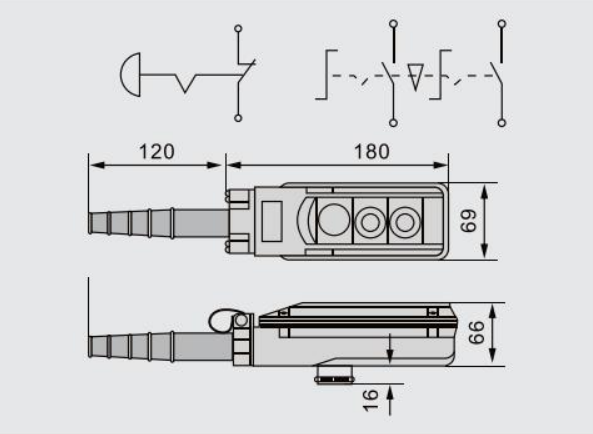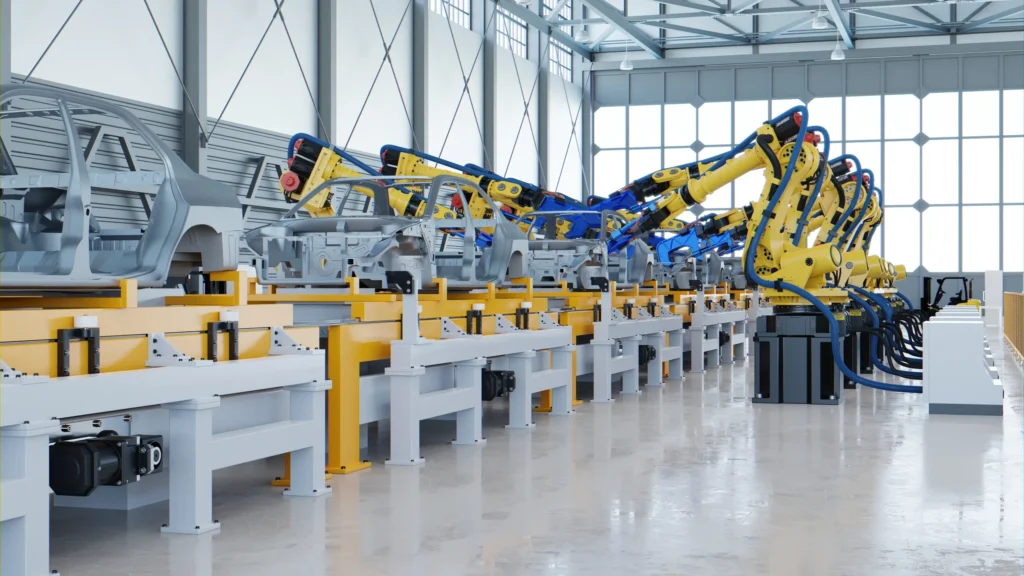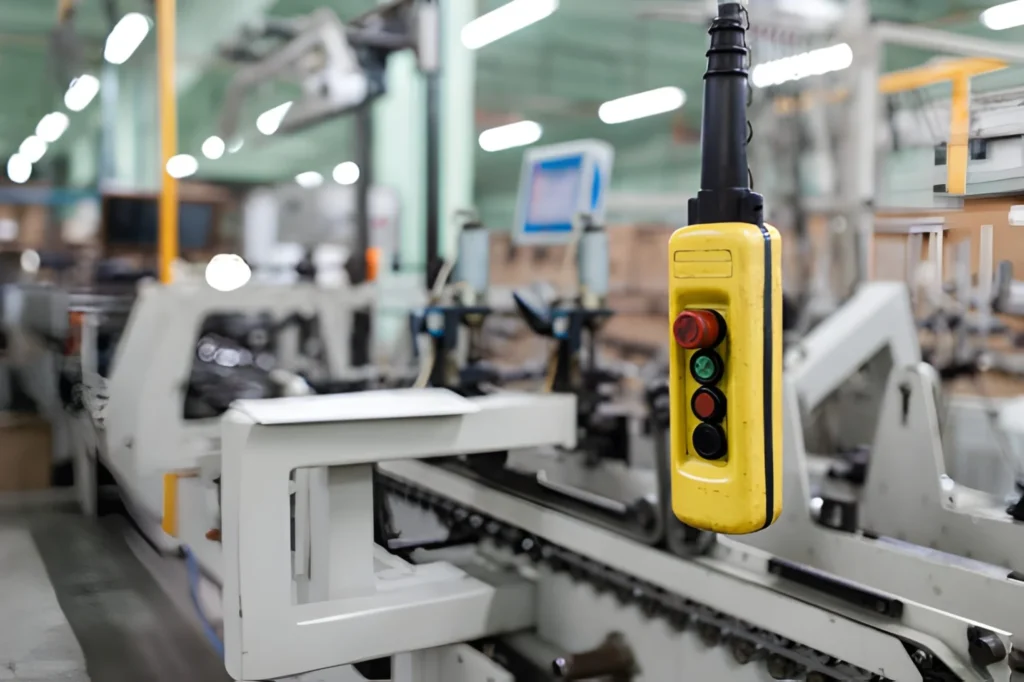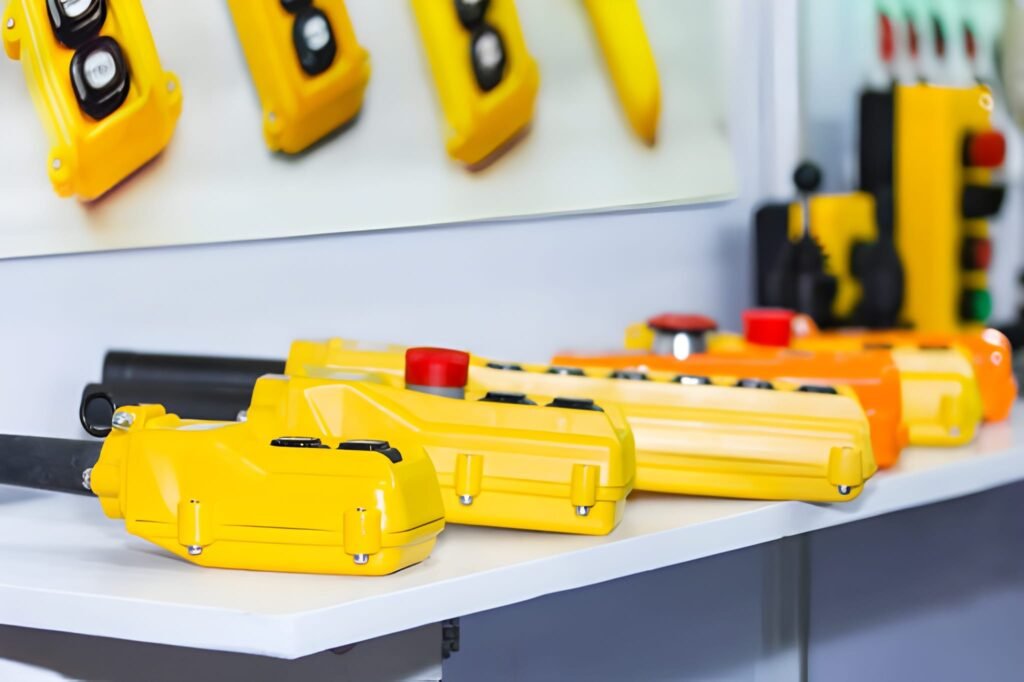目まぐるしく変化する今日の産業環境では、安全性と効率性が本当に重要だ。 天井クレーン・リモコン システムは、製造業、建設業、物流業を問わず、産業界にとって最も価値あるツールのひとつとなっています。このシステムは、オペレーターが安全な距離からクレーンを制御することを可能にし、より良い視界を提供し、生産性を向上させます。
このガイドでは、天井クレーンのリモートコントロールの基本構造と主要コンポーネントについて説明します。クレーン操作のアップグレードをお考えの方、または単にこれらのシステムがどのように機能するかを理解したい方は、このガイドをご覧ください。この高度な制御システムを構成する中核部品と、それらがどのように連携して、安全、正確、効率的な作業を実現するのか、その仕組みに迫ります。
天井クレーン遠隔操作システムの基本構造
一般的な天井クレーンのリモコン COB-61 セットアップは、ワイヤレス技術を通じてシームレスに動作するいくつかの主要コンポーネントで構成されています。その核心は、トランスミッター(オペレーターが持つリモート)とレシーバー(クレーンに取り付けられる)の間の通信です。以下はその概要です:
 コブ61C/62C/63C
コブ61C/62C/63C| コンポーネント | 機能 |
|---|
| 送信機 | コマンドを入力するためのボタンやジョイスティックを備えた携帯機器。 |
| レシーバー | クレーンに取り付けられ、信号を受信し、クレーンのモーターを制御する。 |
| 制御回路 | 信号を管理し、正確な動作、安全性、同期性を確保する。 |
| 電源 | トランスミッター用バッテリー、レシーバー用電源。 |
各パーツは、クレーンのスムーズで安全な操作に不可欠な役割を果たしています。しかし、最新のリモートコントロールを真に効果的なものにしているのは、安全性と機能性を向上させるために設計された高度な機能です。それぞれのパーツを詳しく見て、操作中にどのように連動するかを探ってみましょう。
各パーツの機能の詳細な内訳や、ワイヤレス通信の仕組みの詳細をご覧になりたいですか?
主要コンポーネントの深掘り
1.トランスミッター(リモート)
トランスミッターは、オペレーターが毎日使用するハンドヘルド機器である。通常は
- ボタン 上、下、左、右のような単純なコマンドの場合
- ジョイスティック 多方向制御用
- 緊急停止ボタン 即時シャットダウン
一部のトランスミッターは、産業環境用に頑丈な素材で設計されており、長時間のシフトでも快適な人間工学に基づいたレイアウトが特徴です。高度なモデルには以下も含まれます。 フィードバック機能 負荷状態やシステム警告を表示するLEDインジケーターや小型スクリーンなど。
2.レシーバー
クレーンに直接取り付けられた受信機は、システムの頭脳です。送信機からの信号を解釈し、それに応じてモーター制御や安全機能を作動させます。
| パート | 機能 |
|---|
| 信号デコーダー | 送信機から受信した無線信号を解釈する。 |
| モーターコントローラー | クレーンのホイスト、トロリー、ブリッジの動きを運転する。 |
| 安全インターロック | 危険な動作や作業を防止する。 |
3.制御回路と安全機能
最新のシステムの多くは、マイクロプロセッサーと暗号化を統合し、許可されたコントローラーだけがクレーンを操作できるようにして、干渉やハッキングから守っている。
| 安全機能 | 目的 |
|---|
| 自動周波数ホッピング | 他のRF機器からの干渉を避ける。 |
| 暗号化 | 不正なコントロールから守る。 |
| 緊急停止 | 必要に応じて、すべてのクレーンの動きを瞬時に停止。 |
| リンクモニタリング | 継続的な通信を保証し、接続が切れた場合はシャットダウンをトリガーする。 |
4.電源
バッテリーの寿命と電源の安定性は非常に重要です。高品質のシステムには、低バッテリー警告と堅牢な電源管理が組み込まれており、ダウンタイムを減らし、安定した動作を保証します。

オーダーメイドのソリューションについては、今すぐお問い合わせください!
信頼性の高い当社の天井クレーンリモートコントロールで、クレーン作業をアップグレードしましょう。産業効率化のために設計されたワイヤレスクレーン制御システムで、安全性と生産性を高めてください。
高度な機能とオプション・コンポーネント
モダン 天井クレーン・リモコン は単純なスタート/ストップ機能だけではない。以下のようなものも含まれる:
- リモート・マルチクレーン・コントロール:複雑なジョブの同期オペレーション用。
- LCDフィードバック・スクリーン:負荷重量、バッテリーの状態、エラーメッセージを表示します。
- ワイヤレス・アラートと診断:重大な問題になる前にシグナルを送る
- カスタム制御設定:具体的な仕事のニーズに合わせる。
制御システムのレイアウト例
| モジュール | 説明 |
|---|
| ジョイスティック | 正確なコントロールのための多軸動作 |
| ボタン | フックロック、補助機能など特定のコマンド |
| ディスプレイ | 負荷、システム状態のリアルタイムデータ |
| 安全出口キー | 緊急時の迅速な操作停止 |
要するに、これらの追加機能は、オペレーターが自信を持って複雑な作業を行い、リスクを減らし、安全基準を高めるのに役立つ。
要約すると 天井クレーン・リモコン システム は、現代の産業オペレーションに欠かせない存在です。トランスミッター、レシーバー、制御回路、電源といったコア・コンポーネントが連携し、重量物運搬作業を安全、正確、かつ効率的に制御します。技術の進歩に伴い、これらのシステムはより賢く、より信頼性が高く、より使いやすくなっており、より安全な職場とより高い生産性への道を開いています。
製造業、建設業、物流業を問わず、これらの基本的な構造と部品を理解することは、リモートコントロールを選択または保守する際に、十分な情報に基づいた決定を下すのに役立ちます。クレーン作業を強化する準備はできましたか?今日の市場オプションに飛び込むか、カスタマイズされたソリューションについてお問い合わせください。
よくあるご質問
天井クレーンのリモコンの仕組みは?
ハンドヘルド型送信機から搭載された受信機に無線周波数信号を送信し、クレーンのモーターを作動させる。
一般的なコントロール範囲は?
ほとんどのシステムは100〜200メートル以内で確実に作動するが、Pantherシステムのような高度なモデルでは1,600フィートまで届くものもある。
安全性はどのように確保されているのか?
暗号化された信号、自動周波数ホッピング、緊急停止ボタン、常時接続チェックのためのリンク・モニタリングなどの機能がある。
これらのシステムは複数のクレーンを同時に制御できますか?
はい、最新のシステムの多くは、同期制御によるマルチクレーン操作をサポートしています。
リモコンはどのような環境に適していますか?
振動、ほこり、極端な温度、その他の厳しい条件にも耐えられるように設計されている。
どのようなメンテナンスが必要ですか?
システムを円滑に作動させるために、定期的なバッテリー点検、ソフトウェアのアップデート、安全点検をお勧めします。









